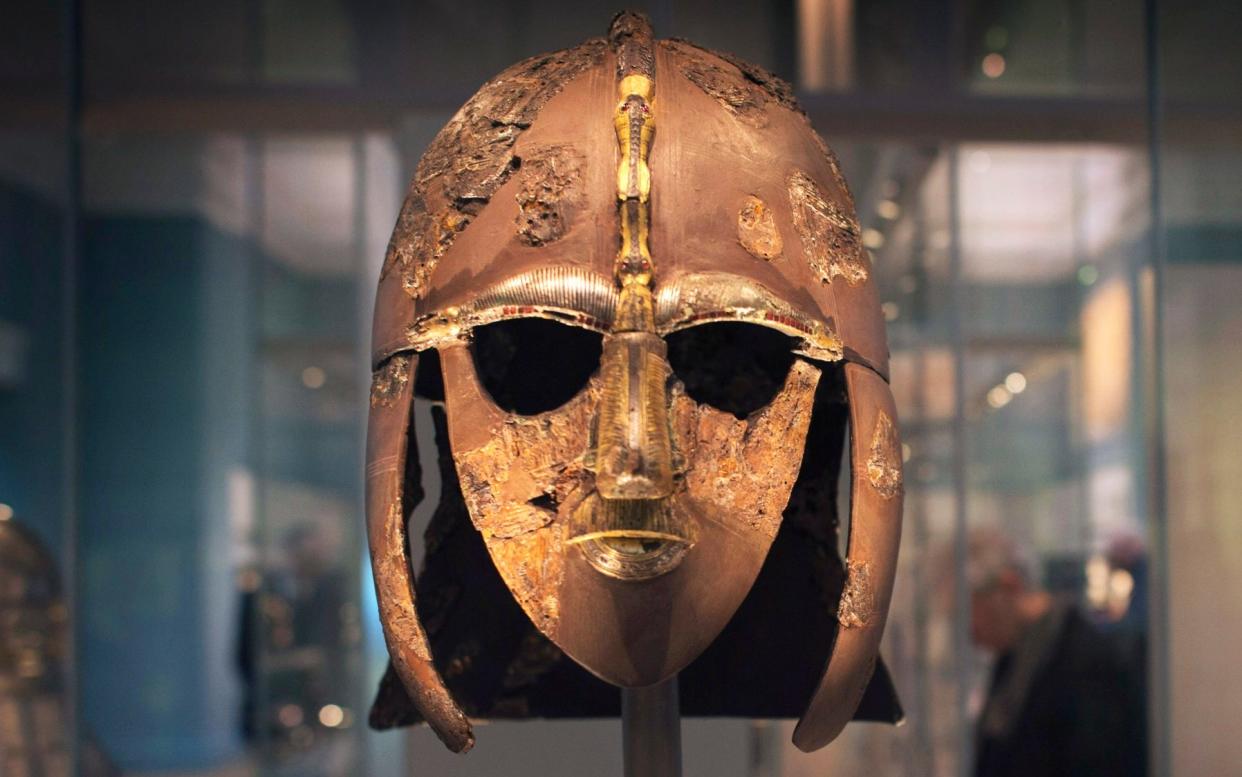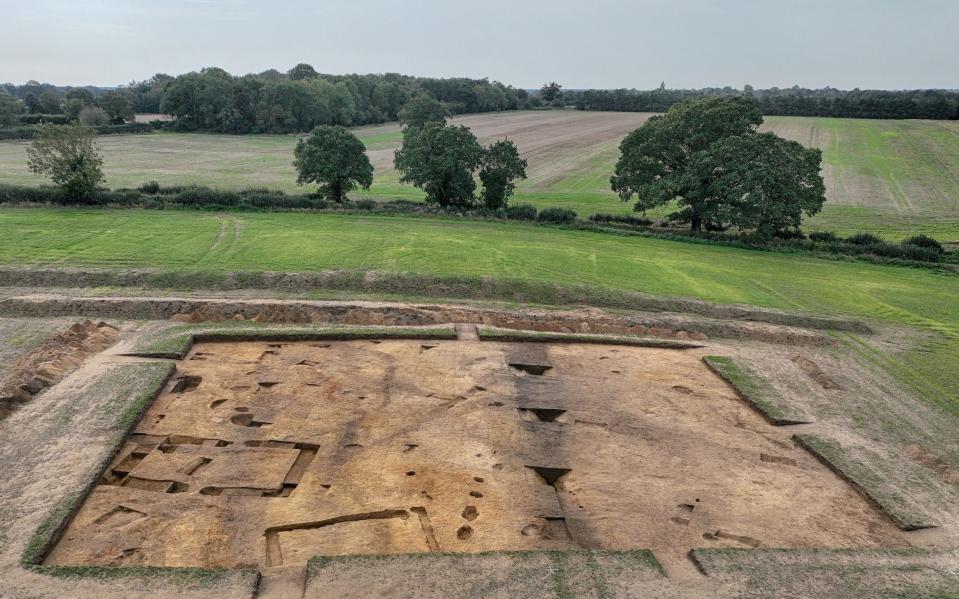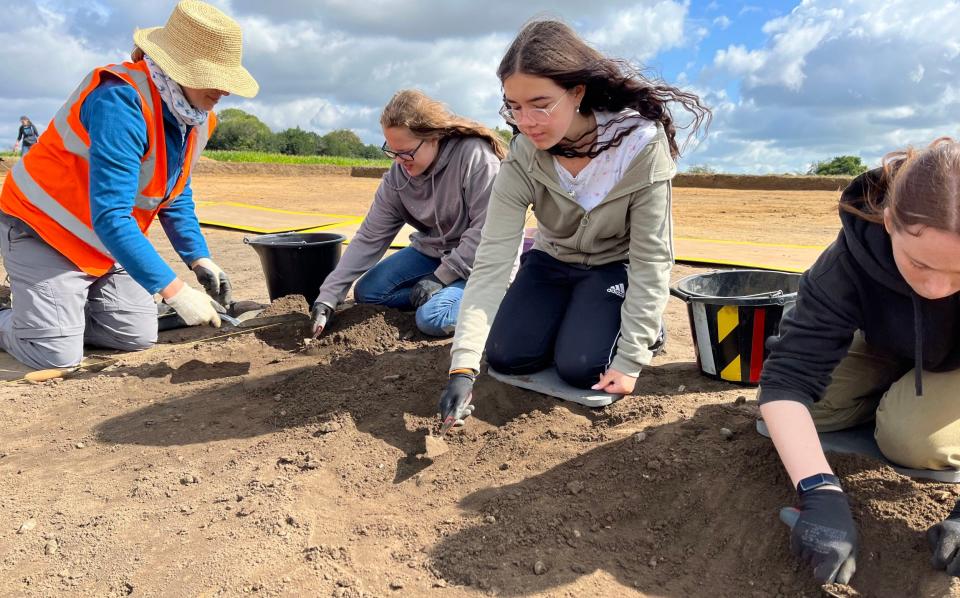‘Sutton Hoo king’s lost temple’ discovered in Suffolk

- Oops!Something went wrong.Please try again later.
A lost 1,400-year-old temple, said to have been built by the English king buried at Sutton Hoo, may have been discovered in Suffolk.
The Venerable Bede, a monk and historian, wrote that King Redwald, who died in AD 625, built a temple housing altars to both Christ and pagan gods.
The monarch, who is thought to have been the person buried in a ship at Sutton Hoo, was the first East Anglian king to convert to Christianity, but also kept links to other religions.
The temple’s location was believed lost in time. But archaeological teams have uncovered the remains of a building in Rendlesham, close to King Redwald’s burial place, which may be the site mentioned by Bede.
Volunteers from community archaeology project Rendlesham Revealed made the discovery, along with that of a number of other buildings, during a dig earlier this summer, Suffolk County Council has revealed.
“Its distinctive and substantial foundations indicate that one of the buildings, 10 metres long and five metres wide, was unusually high and robustly built for its size, so perhaps it was constructed for a special purpose,” said Professor Christopher Scull, of Cardiff University and University College London.
He added: “It is most similar to buildings elsewhere in England that are seen as temples or cult houses, therefore it may have been used for pre-Christian worship by the early kings of the East Angles.
“The results of excavations at Rendlesham speak vividly of the power and wealth of the East Anglian kings, and the sophistication of the society they ruled.”

King Redwald reigned from around 599 to his death, and was referred to in the Anglo-Saxon Chronicle as a bretwalda – an Old English term meaning “Britain-ruler” or “wide-ruler”.
He is thought to be the most likely occupant of the Sutton Hoo ship burial. A second ship burial site was found nearby in 1998, which was thought to contain his son Regenhere.
A dig last year in the same area by members of Rendlesham Revealed found evidence of a huge royal compound, including a large timber hall. The site was surrounded by a ditch of nearly one mile long that enclosed an area the size of 20 football pitches.

Along with the temple, the new excavations this summer also uncovered evidence of fine metalworking associated with royal occupation, including a mould used for casting a decorative horse harness similar to that found at Sutton Hoo.
The archaeological discoveries show that Rendlesham has been a location for human settlement and activity for 6,000 years from the fourth millennium BC to the present day.
The council said the area was “most important” when it was a royal centre from the 6th to 8th centuries AD.
The latest dig also uncovered a Second World War searchlight emplacement, which was part of a searchlight battery recorded by US Force aerial photography in December 1943.

